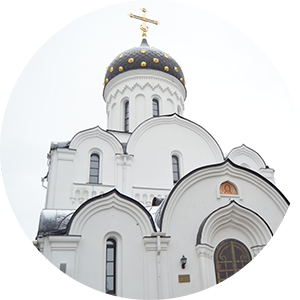Where does the
orthodox tradition on wearing black long cassocks come from and what is their
purpose? Here is a wonderful article that discusses this matter:
"People have
sometimes approached me and asked why Orthodox priests (as well as deacons,
monks and bishops) traditionally wear black cassocks. In the earliest Church,
it does not seem that clergy wore any distinctive garb, except of course
liturgical vestments, which in some cases also were worn outside the Divine
services. For example, sometimes bishops and priests wore the phelonion like regular clothing, as did
the deacons with the sticharion (in
the West dalmatic).
It seems reasonable
to assume this was at least partly due to the facts that 1) Christians were
frequently persecuted during the first centuries, and self-identifying marks
like clerical garb would therefore in some cases be tantamount to suicide; and
2) there was, at that time, no pressing need to alter their standard wear. The
early priesthood was in many ways understood in the context of the Levitical
priesthood inherited from the Jewish tradition by the early Church, and
standard (non-liturgical) wear for them was not always identifiably different
from that of others.
So for the first
three centuries, priests wore more or less the same clothes as ordinary people.
The tunics were normal clothes. But when it became fashionable to wear shorter
robes, most priests kept the longer more conservative tunics, and thus they
stood out from other people. As fashions changed in the Roman Empire, it seemed
right for the ordained clergy not to follow the vain changes of worldly styles.
The Council of
Braga in Portugal (572) seem to be one of the first synods to mandate that
clergy wear a tunic reaching to the feet.
The Quinisext
Council (692, i.e. the conclusion of the Sixth Ecumenical Council) stated:
“None of those who are in the catalogue of the clergy shall wear clothes
unsuited to them, either while still living in town or when on a journey: but
they shall wear such clothes as are assigned to those who belong to the
clergy.” (Canon XXVII)
Responding to
reports of laxity in Britain, Pope John VIII (c. 875) admonished the
Archbishops of Canterbury and York to ensure that their clergy wore proper attire,
particularly long tunics.
The English word
“cassock” derives from the early French casaque,
meaning “a long coat.” The Russian word for the cassock is подрясник (podryasnik), and the Greek is αντερί (anteri) or ράσον (rason).
The color black
indicates spiritual poverty – it is historically the easiest and cheapest color
to dye fabric with. Moreover, black is a color of mourning and death for the
priest, the symbolism is dying to oneself to rise and serve the Lord as well as
giving witness of the Kingdom yet to come. Black is associated with sorrow but
in the case of priestly robe this color has another symbolic meaning. A black
cassock is to remind a priest that he ‘dies to the world’ every day and
immerses in eternity. Blackness also symbolizes giving up bright colors and
thus giving up what the world brings, its glittering, honors and entertainment.
Also, as an Archpriest once pointed out to me, stains are readily visible on
black, reminding the priest that he is held to a higher standard. His sins and
failings will be more visible and judged harsher, than those of other people.
In our very secular world, the wearing of the cassock continues to be a visible
sign of belief and of the consecration of one’s life to the service of the Lord
and His Church."
By Fr. Andreas Blom
Source: http://www.stgabrielashland.org/why-do-you-wear-that-black-cassock/


















CONVERSATION